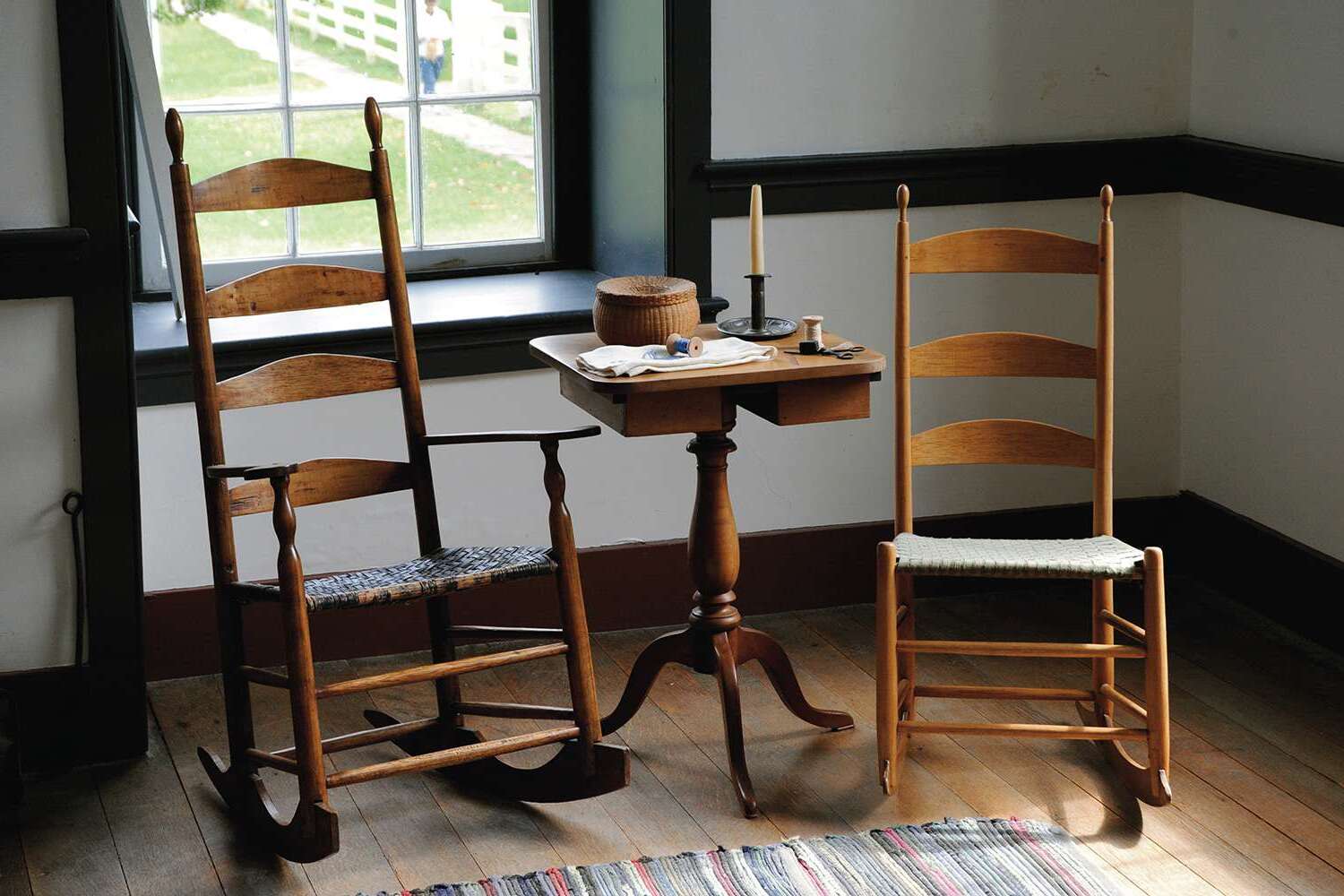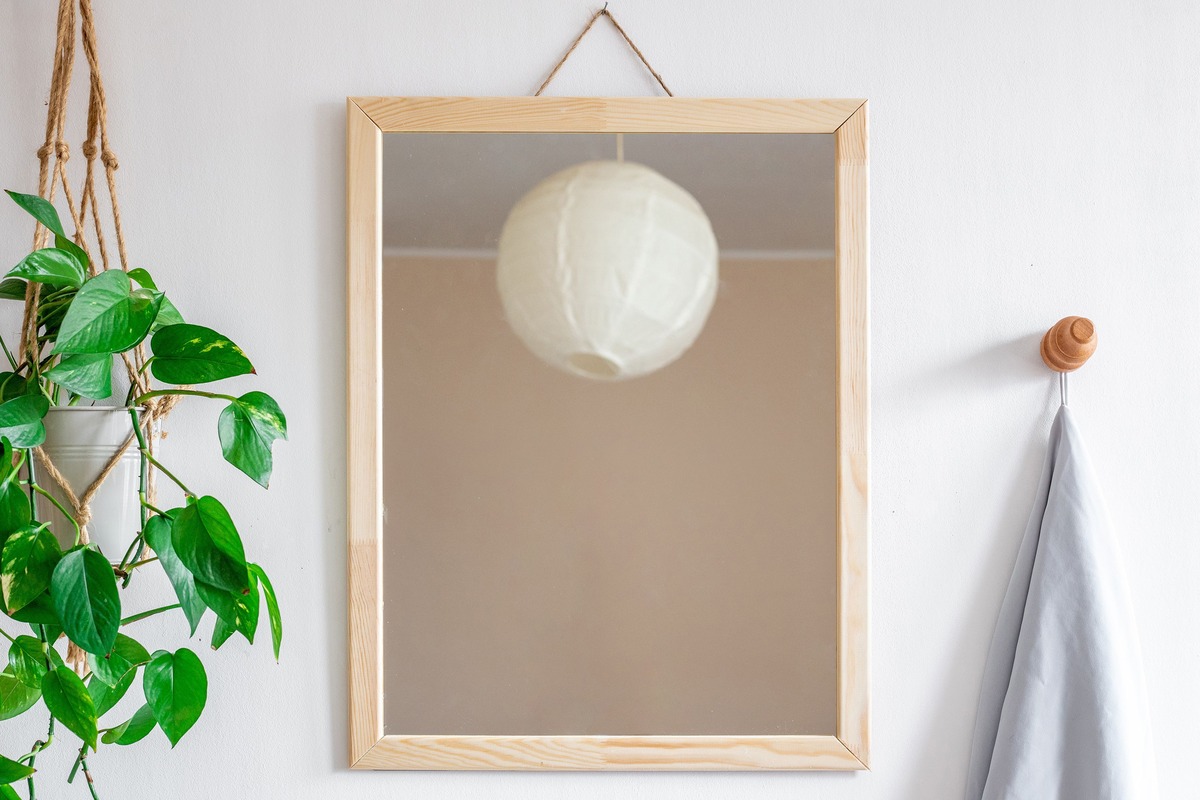Home>Create & Decorate>DIY & Crafts>DIY Futon Frame: How To Build Your Own Comfortable Lounging Space


DIY & Crafts
DIY Futon Frame: How To Build Your Own Comfortable Lounging Space
Published: April 15, 2024

Content Creator specializing in woodworking and interior transformations. Caegan's guides motivate readers to undertake their own projects, while his custom furniture adds a personal touch.
Learn how to create your own comfortable lounging space with our DIY futon frame guide. Perfect for DIY & Crafts enthusiasts.
(Many of the links in this article redirect to a specific reviewed product. Your purchase of these products through affiliate links helps to generate commission for Twigandthistle.com, at no extra cost. Learn more)
Introduction
Are you looking to add a cozy and versatile seating option to your home? Building your own futon frame can be a rewarding and cost-effective project. Whether you want to create a comfortable lounging space for your living room, guest room, or home office, a DIY futon frame allows you to customize the size, style, and finish to suit your needs. In this guide, we'll walk you through the step-by-step process of building your own futon frame, so you can enjoy a comfortable and stylish seating option that you can be proud of.
Materials Needed
To get started on your DIY futon frame project, you'll need the following materials:
- Wood: Choose high-quality lumber such as pine, oak, or maple for the frame. You'll need pieces for the arms, backrest, seat, and slats.
- Futon Mattress: Measure the dimensions of the mattress you plan to use to ensure the frame will accommodate it.
- Wood Screws: Opt for durable screws that are suitable for woodworking.
- Wood Glue: A strong wood glue will help reinforce the joints and ensure the frame's stability.
- Sandpaper: Use sandpaper to smooth out any rough edges and surfaces for a professional finish.
- Stain or Paint: Select a finish that complements your existing decor and protects the wood from wear and tear.
- Polyurethane: Applying a coat of polyurethane will provide a protective finish and enhance the durability of the frame.
- Measuring Tape: Accurate measurements are crucial for ensuring the frame fits the futon mattress perfectly.
- Safety Gear: Don't forget safety goggles and gloves to protect yourself during the construction process.
Gathering these materials before you begin will ensure a smooth and efficient building process.
Tools Required
Before diving into the construction of your DIY futon frame, it's essential to have the right tools on hand. Here are the tools you'll need for this project:
-
Circular Saw: A circular saw will be indispensable for cutting the wood to the required dimensions. Ensure that the saw blade is suitable for cutting through the chosen type of wood.
-
Drill and Bits: A power drill with a set of drill bits will be used for creating pilot holes and driving screws into the wood.
-
Screwdriver: While a power drill can be used for driving screws, a screwdriver will come in handy for certain detailed tasks and final adjustments.
-
Clamps: Clamps are essential for holding the wood pieces together securely during assembly. They help ensure that the frame components are aligned correctly before attaching them.
-
Wood Chisel: A wood chisel will be useful for fine-tuning the fit of certain joints and making small adjustments to the wood.
-
Sandpaper or Sander: Smooth out rough edges and surfaces using sandpaper or a power sander for a professional and polished finish.
-
Paintbrushes or Stain Applicators: Depending on whether you choose to paint or stain your futon frame, you'll need brushes or applicators for an even and smooth application.
-
Safety Gear: Don't forget to prioritize safety. Safety goggles and gloves are essential for protecting your eyes and hands during the construction process.
Having these tools at your disposal will make the construction process more efficient and help you achieve a professional result.
Step 1: Measuring and Cutting the Wood
Before diving into the assembly process, it's crucial to start with accurate measurements and precise cuts to ensure the futon frame comes together seamlessly. Follow these steps to measure and cut the wood for your DIY futon frame:
-
Measure the Dimensions: Begin by measuring the dimensions of the futon mattress you plan to use. This will determine the size of the frame. Take into account the length, width, and thickness of the mattress to ensure a proper fit.
-
Select the Wood: Choose high-quality lumber such as pine, oak, or maple for the frame. Once you have the measurements, use a circular saw to cut the wood pieces to the required lengths for the arms, backrest, and seat of the futon frame.
-
Cutting the Components: Use a measuring tape and pencil to mark the wood according to the measurements. Double-check the measurements before making any cuts to avoid errors. Then, carefully use a circular saw to make precise cuts along the marked lines.
-
Create Mortise and Tenon Joints: If you're aiming for a traditional and sturdy frame, consider creating mortise and tenon joints for the frame's connections. Use a chisel and mallet to carefully carve out the mortises and shape the tenons on the ends of the wood pieces.
-
Sand the Edges: After cutting the wood, use sandpaper or a power sander to smooth out any rough edges and surfaces. This will ensure a professional finish and prevent any splinters when handling the frame.
By taking the time to measure accurately and make precise cuts, you'll set a solid foundation for the construction of your DIY futon frame. This attention to detail will contribute to a sturdy and well-crafted final product.
Step 2: Assembling the Frame
Once you have the wood pieces cut to the correct dimensions, it's time to start assembling the futon frame. Follow these steps to ensure a sturdy and well-constructed frame:
-
Lay Out the Components: Begin by laying out all the cut wood pieces in the designated assembly area. This will allow you to visualize the arrangement and ensure that you have all the necessary components before proceeding.
-
Create the Frame Structure: Start by assembling the backrest, seat, and arms of the futon frame. Use clamps to hold the pieces together securely during assembly. Ensure that the pieces are aligned correctly before attaching them.
-
Pre-Drill Pilot Holes: To prevent the wood from splitting, it's essential to pre-drill pilot holes before driving in the screws. Use a power drill with a drill bit that matches the size of the screws you'll be using.
-
Secure the Joints: Once the pilot holes are drilled, use wood screws and wood glue to secure the joints. This combination will provide both mechanical strength and adhesive bonding, ensuring the stability of the frame.
-
Reinforce the Connections: For added durability, consider adding corner braces or metal brackets at the joints. This will further reinforce the connections and contribute to the overall stability of the frame.
-
Check for Stability: After assembling the main structure, carefully check the frame for stability and structural integrity. Make any necessary adjustments to ensure that the frame is solid and well-balanced.
By following these steps, you'll be able to assemble a robust and reliable futon frame that will provide a comfortable lounging space for years to come. Taking the time to ensure that the frame is securely assembled will contribute to its longevity and performance.
Read more: How To Build A Sofa Frame
Step 3: Attaching the Slats
Attaching the slats is a crucial step in the construction of your DIY futon frame, as they provide support for the futon mattress and contribute to the overall comfort of the seating. Follow these steps to ensure the slats are securely attached to the frame:
-
Measure the Spacing: Begin by measuring and marking the spacing for the slats on the seat portion of the frame. The spacing should be uniform to provide even support for the futon mattress.
-
Cut the Slats: Using the same type of wood as the frame, cut the slats to the appropriate length to fit the width of the seat. Ensure that the slats are smooth and free of any rough edges.
-
Position the Slats: Place the slats evenly across the seat portion of the frame, ensuring that they are aligned parallel to each other. Use a measuring tape to maintain consistent spacing between the slats.
-
Secure the Slats: Once the slats are positioned correctly, use wood screws to secure them to the frame. Pre-drill pilot holes to prevent the wood from splitting, and then drive the screws through the slats into the frame.
-
Reinforce the Connections: To enhance the stability of the slats, consider adding additional support in the form of wooden cleats or metal brackets underneath the slats. This will prevent the slats from shifting or sagging over time.
-
Test for Support: After attaching the slats, test the support by applying pressure to different areas of the seat. Ensure that the slats remain firmly in place and provide consistent support across the entire seating area.
By following these steps, you'll ensure that the slats are securely attached to the frame, providing a stable and supportive base for the futon mattress. This attention to detail will contribute to the overall comfort and durability of your DIY futon frame.
Step 4: Adding the Finishing Touches
Adding the finishing touches to your DIY futon frame will not only enhance its visual appeal but also contribute to its longevity and durability. Follow these steps to complete the construction process with finesse:
-
Sand and Smooth: Before applying any finish, thoroughly sand the entire surface of the futon frame to ensure it is smooth and free of any rough patches or imperfections. Use fine-grit sandpaper to achieve a professional and polished finish.
-
Select a Finish: Choose a finish that complements your existing decor and provides protection for the wood. Whether you opt for a wood stain to enhance the natural grain or a coat of paint to match your interior, ensure that the finish is suitable for the type of wood used in the frame.
-
Apply the Finish: Using a paintbrush or a stain applicator, apply the chosen finish evenly across the entire surface of the frame. Ensure that the finish penetrates the wood for a lasting effect. If you opt for a wood stain, consider applying multiple coats for a deeper and richer color.
-
Protect with Polyurethane: Once the initial finish has dried, consider applying a coat of polyurethane to provide a protective layer and enhance the durability of the frame. Polyurethane will safeguard the wood from scratches, moisture, and general wear and tear.
-
Allow for Drying Time: After applying the finish and polyurethane, allow the futon frame to dry completely in a well-ventilated area. This will ensure that the finish sets properly and provides long-lasting protection for the wood.
-
Reassemble the Frame: Once the finish has dried, reassemble the futon frame by attaching any detached components. Ensure that all connections are secure and that the frame is stable before placing the futon mattress on top.
By adding these finishing touches, you'll not only elevate the aesthetic appeal of your DIY futon frame but also protect it from daily wear and tear, ensuring that it remains a comfortable and stylish seating option for years to come.
Conclusion
Congratulations! You've successfully completed the construction of your very own DIY futon frame. By following the step-by-step process outlined in this guide, you've not only created a comfortable lounging space but also personalized it to suit your specific needs and style preferences. Your attention to detail in measuring, cutting, assembling, and adding the finishing touches has resulted in a sturdy and stylish futon frame that will undoubtedly be a valuable addition to your home. Whether it's for accommodating guests, relaxing in your living room, or creating a cozy nook in your home office, your DIY futon frame is a testament to your craftsmanship and creativity. Enjoy the comfort and satisfaction of lounging on a piece of furniture that you built with your own hands.















